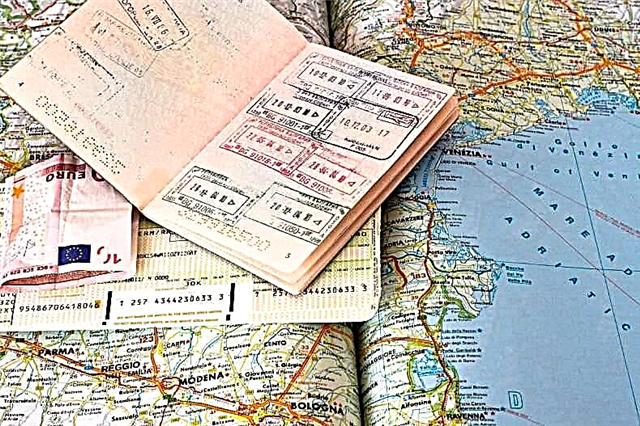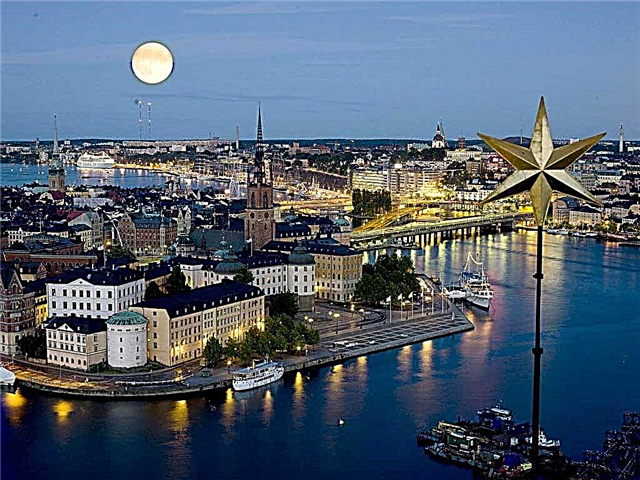German Wiesbaden is famous first of all as a European resort with thermal springs, a place of elite rest and recreation. The city is also famous for its architectural monuments. One of the most famous places in this corner of Germany, attracting numerous tourists, is the Church of St. Elizabeth in Wiesbaden and the Orthodox cemetery at its walls. Their history is of considerable interest to travelers visiting Wiesbaden for the first time.

How the church in Wiesbaden came to be
In the first half of the 19th century, the seventeen-year-old niece of the Russian Tsar Nicholas I, Grand Duchess Elizabeth Mikhailovna, married the Duke of Nassau, Adolph Wilhelm. The newlyweds settled in the then capital of the duchy - Wiesbaden. But their happiness did not last long - a year later, the young duchess died during a difficult birth. Her newborn daughter also died with her.
The widowed duke decided to spend Elizabeth's dowry, the amount of which was a million rubles, on the construction of a sarcophagus and a church on the grave of his deceased wife. As a result, in the highest place of the city, on Mount Nero (in German Neroberg), an Orthodox church appeared, which became the symbol of Wiesbaden.
The remains of Elizabeth and her daughter are buried here; later, all immigrants from Russia began to be buried next to the church. Spruce trees are planted behind the building, which have become an emerald background, against which the Russian church in Wiesbaden stands out, the domes of which are visible from anywhere in the city.

At the end of the 19th century, the temple was visited by Nicholas II. He bought it out for his own money, so the land, the church building and the cemetery are still the property of the Russian Orthodox Church abroad. Divine services here take place in the Church Slavonic language.
Architecture and decoration of the temple
Architect Philip Hoffmann approached the construction of the church with all seriousness. He visited Russia, where he was shocked by the grandeur of the Cathedral of Christ the Savior in Moscow; he was also greatly impressed by the Peter and Paul Church in Peterhof. It was these structures that were taken as the basis for the church in Germany, which it was decided to build from light sandstone.
Five golden domes with a slightly elongated shape give the building slenderness and completeness. The triple windows and columns on the facade, made in the Russian-Byzantine style, make it look like Greek church buildings, therefore the church of St. Elizabeth is sometimes called the Greek chapel.
Inside the church is richly decorated with marble slabs - black Egyptian, red German, gray Swedish. The high iconostasis is completely made of snow-white Carrara marble; it contains 25 icons by the famous icon painter, professor of the St. Petersburg Academy of Arts Timofey von Neff. The frescoes on the walls were made by the court painter O. Jacobi. At the back of the building there is a niche with a white marble sarcophagus and a statue of Elizabeth.

In the 90s of the last century, the decoration of the temple was significantly updated, marble parts were restored, frescoes were restored, which amaze with the richness of colors.
St Elizabeth's Church and Orthodox Cemetery
The church belongs to the Berlin Diocese of the Russian Orthodox Church Abroad. The Germans themselves believe that everything here is permeated with the Russian spirit.
Much attention is paid to the temple by its current abbot, Archbishop Mark. A priest's house was built at the temple, which was conceived and executed in the Russian style. Immediately behind the house, an Orthodox cemetery begins, which is an area with overgrown trees and bushes. It is considered the largest Russian cemetery in Europe. Here are buried representatives of the Russian aristocracy who lived in Germany in the 1XIX century, as well as who arrived here after the 1917 revolution.
Among the most famous burials: the children of Alexander II, Prince Georgy Yuryevsky and his sister Olga, princes Kochubei, Vorontsov-Dashkovs, diplomats Glinka, Struve, sister of the Decembrist Julia Kuchelbecker. More than eight hundred people who served Russia in different periods of its history found their rest here.
Since the cemetery is being destroyed and requires restoration, the Russian Orthodox Fund has been created, which collects donations to support the ancient monument. To restore it, they use old photographs preserved in the archives.
How to get to the Russian church in Wiesbaden
Getting to Wiesbaden to see the Russian church is not difficult. The main thing is to draw up the necessary documents, comply with visa formalities and come to Germany.

The closest major city and airport to the German resort is Frankfurt am Main, where the imperial cathedral is located. The flight from St. Petersburg and Moscow takes a little over 3 hours. From the airport, you need to move to the S-bahn station, from which commuter trains leave. On the Deutsche Bahn website, you can choose the train travel option that suits you best. The distance from Frankfurt to Wiesbaden is about 35 km, travel time is about 60 minutes. You can buy tickets without any problems at the machine or at the box office.
Since the temple of Righteous Elizabeth is located on a mountain whose height is about one hundred meters, you can get there from the city by a funicular, however, it works only in the warm season.
You can drive up to the temple by car or walk along the highway - it doesn't take much time. There is a free parking lot near the church complex, but you will have to pay to enter the church itself.
Finally
Many tourists are attracted not only by recreation, but also by attractions in Wiesbaden: museums, parks, palaces. The city is perfectly preserved, therefore its historical part, the castle in Bibrikh, the old Rathaus (town hall) and other memorable places leave an indelible impression from visiting this “city of millionaires”. And yet, it is the Russian church that is especially popular with tourists. The snow-white complex on Mount Nero has long been the main attraction of Wiesbaden. By visiting it and touching the monument of tender love and immeasurable sorrow, you will have the opportunity to join history, enrich yourself spiritually and at the same time enjoy the beautiful panorama of the city. Also, tourists recommend seeing the Ettal Monastery, Eltz Castle, Aachen Cathedral in Germany.











